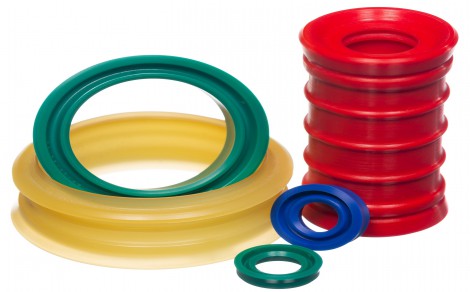- Home » Editorial » Hydraulics
Seal of approval – The Polyurethane advantage

By Andy Longdon, technical sales manager, Ceetak Sealing Solutions.
The foam in your armchair, the strap on your wristwatch, the wheels on a supermarket shopping trolley and beyond; Polyurethane certainly has a diverse range of uses since its invention almost 85 years ago. Aside from day-today products, it is also a highly capable and versatile sealing material.
What is Polyurethane?
So, what is Polyurethane? Is it rubber, is it plastic, is it rigid, is it flexible? The answer to all those questions is – yes. Polyurethane covers a group of materials; plastic polymers produced by the combination (or synthesis) of diisocyanates with polyols and a chain extender.
Thermoplastic Polyurethane (TPU) belongs to the Thermoplastic Elastomer (TPE) family. It was originally invented by Otto Bayer in 1937 and further developed during WWII as an alternative to rubber (which was difficult to source at the time). It can be formulated to produce different finished materials with an array of properties suitable for a wide range of applications.
In addition to seals, Polyurethane is the basis of products as diverse as varnish, foam mattresses, roller skate wheels and surfboards. There are hundreds of different types of polyurethanes, each made in a slightly different way to suit the demands of the final product
How are Polyurethane materials manufactured?
In a one-step process, the polyol (a compound containing multiple hydroxyl groups) is mixed with isocyanate (highly reactive low molecular weight chemicals) and chain extender (low molecular weight diols or diamines). The result is a random copolymer with a physically cross-linked irregular molecular structure.
In a two-step process, the polyol and isocyanate are mixed first to produce a pre-polymer. This is then mixed with the chain extender to produce a block copolymer with more regular molecular structure. This can result in improved and more consistent material properties in exchange for a slightly higher production cost.
In both cases, additives can be used to help prevent attack due to hydrolysis (water absorption), UV or ozone. For more rigid Polyurethanes (like the ones we use for sealing products) the mixed liquid material can either be cast into tubes from which seals can be machined on CNC lathes, or cast into bricks which are then chipped, mixed with dye (or other additives), and fed into injection moulding machines
Why is Polyurethane a good seal material?
When formulated appropriately, Polyurethane yields an impressive set of material properties that make it an ideal material for sealing products, especially in pneumatic and hydraulic actuation. It is flexible enough to be assembled into closed grooves and is far less susceptible to assembly damage compared to PTFE, compressing into seal glands or stretching onto piston heads with relative ease. It has excellent elastic behaviour, recovering almost instantly from deformation; again, outperforming PTFE (no springs or rubber energisers needed here to give the initial sealing contact stress) and matching rubber materials. However, unlike rubber it has higher modulus and extrusion resistance, meaning it can often be used without antiextrusion/back-up rings at considerably higher pressures than even a 90- durometer elastomer O-ring would be capable of.
-
PPMA 2025
23 September, 2025, 9:30 - 25 September, 2025, 16:00
NEC, Birmingham UK -
Advanced Engineering Show 2025
29 October, 2025, 9:00 - 30 October, 2025, 16:00
NEC, Birmingham UK










